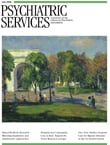Books like this one, consisting of many chapters, most of them with more than one author, inevitably vary in their usefulness according to the interests and experience of individual readers. Those readers should be aware, however, that Growing Up With Autism has an unusual focus, but a welcome one: it concentrates on a population that is, in the tactful language of one chapter, "less able." The majority of children growing up with autism may have a degree of retardation; some may never talk at all. Yet published research has focused on the high-functioning or Asperger's children, while the more severe impairments go unaddressed. There are many children, adolescents, and even adults to who must be taught joint attention, functional communication skills, and everything that seems obvious but is far from obvious. This book is full of suggestions about how this can be done.
Some chapters, of course, are more useful than others, and not every chapter title communicates its usefulness. So the table of contents may be only a beginning; readers should be ready to explore the subheads, conveniently printed in boldface, for further guidance.
In general, the more examples and brief case histories, the more helpful the chapter will be to the teachers and caregivers who are increasingly called upon to work with this challenging population. The title of chapter 6, "Assistive Technology as an Aid in Reducing Social Impairments in Autism," may not seem particularly attractive, but it's a chapter crammed with unexpected and practical suggestions for intervention. The chapters on autism and the law are particularly helpful. Chapter 13, "Criminal Justice and the Law," proclaims its focus by its title, as chapter 7 does, "Advocating for Services: Legal Issues Confronting Parents and Guardians." But an over-general title like that of chapter 8, "Family Resources During the School-Age Years," may conceal valuable material on legal issues as well. This chapter points out that families contemplating a move to another state should ask not only about available services but about waiting lists for those services—they may be very long.
In the same chapter, readers can find a table listing "Departments Responsible for the Administration of Developmental Disabilities Programs in the 50 U.S. States." The table, however, requires careful reading; autism is nowhere mentioned, though retardation and aging appear prominently. What parent, teacher, or caregiver looking for services for a severely autistic child would think to find them under such titles as New Mexico's Department of Health, or Pennsylvania's Department of Public Welfare, or Arizona's Department of Economic Security?
But whatever the caveats, readers concerned with autism will find this a useful book to add to their shelves.

